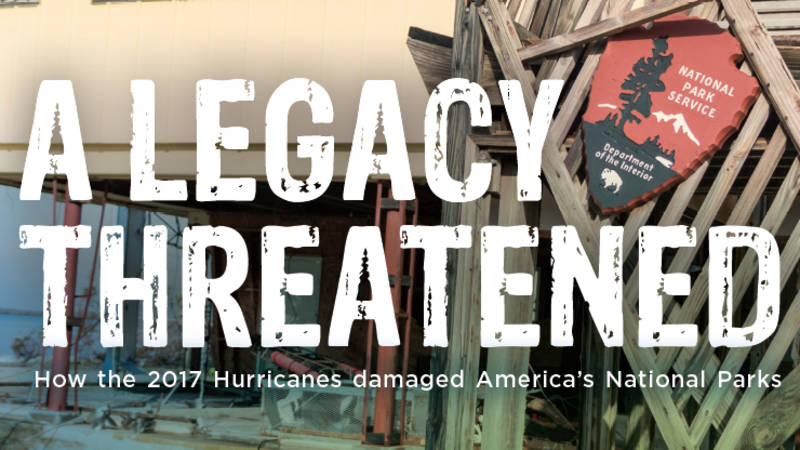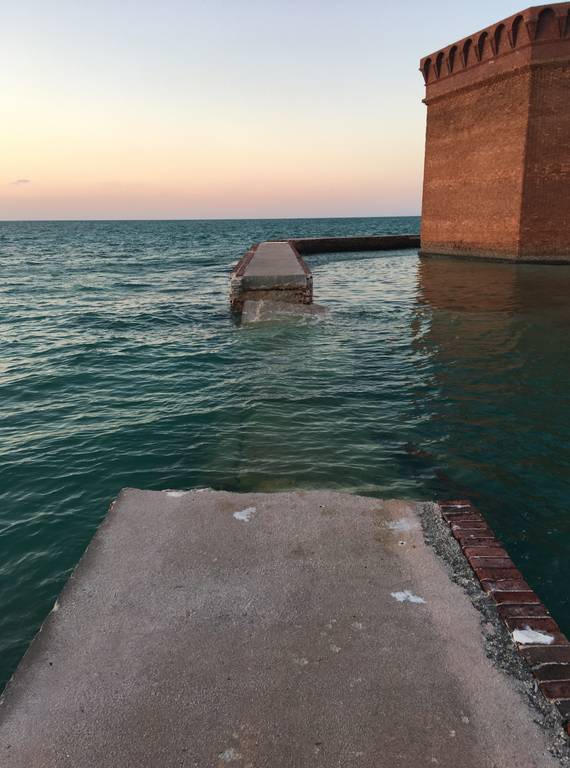Hurricanes Harvey, Irma, and Maria devastated communities. They also caused unprecedented damage to national parks. Hundreds of millions of dollars are needed to repair these parks and protect the National Park Service budget, which is already underfunded and cannot absorb the huge cost of hurricane recovery.

A Legacy Threatened
NPCA’s photo book shows the damage to parks caused by the 2017 hurricanes.
See more ›We urge support for including robust National Park Service funding in the next disaster relief bill. The funds must be sufficient to meet parks’ needs and rebuild infrastructure to be more resistant to future storms.
National parks are integral to the economic well-being and quality of life for surrounding communities including those devastated by recent storms; their repair is critical to support the economy and livelihoods and restore America’s natural and cultural heritage.
Hurricane Damage at National Parks
More than 50 park sites in nine states and territories were impacted by the hurricanes, damaging infrastructure and habitat and causing park closures.
Storms damaged and destroyed historic structures, staff housing, visitor centers, ferry boats, levees, boardwalks, docks, trails, and more. Critically, many areas have also witnessed natural habitat seriously harmed by the storms, threatening water quality, wildlife habitat, and the ability of these areas to protect communities and ecosystems from future storm surges.
- At Virgin Islands National Park, the park’s staff housing and some of the oldest historic structures were destroyed. The park could be closed for an entire year.
- At Everglades National Park, the Gulf Coast Visitor Center was destroyed and Flamingo Visitor Center sustained serious damage. There are many stranded and sunken vessels within the national park along the Gulf Coast and in Florida Bay.
- At Fort Pulaksi in Georgia and Fort Sumter in South Carolina, significant flooding and structural damage closed the parks for extended periods.
National Park Recovery Benefits Communities
Rebuilding is critical for the health and recovery of local economies that rely on park visitation. National parks generate more than $30 billion for the U.S. economy and support nearly 300,000 private-sector jobs annually.
Damage Threatens the National Park Budget

A collapsed section of the moat wall at Fort Jefferson at Dry Tortugas National Park.
©NPSNPCA and its partners are deeply concerned about the threat to National Park Service funding if the agency must absorb the enormous costs of repairing hurricane damage. The damage is so great in magnitude that it is estimated to be on the scale of the entire annual budget for maintenance and repairs, estimated in the hundreds of millions of dollars. The National Park Service continues to assess park damage totals.
Absorbing the enormous cost of these disasters would only set back these efforts to meet challenges and address other longstanding infrastructure needs.
Congress has made headway in addressing park maintenance the last two fiscal years; failure to include storm costs in a supplemental funding bill would undermine that effort.
The Park Service has already been challenged by insufficient funding for maintenance, operations and increased visitation. Over the last five years, park visitation has increased 19% while staff levels have decreased by 11%.
The Need for Resiliency Funding
Rebuilding Resilient National Parks After Sandy
The next disaster supplemental should not only cover costs to repair and rebuild ecosystems, infrastructure, and historically significant structures, but also dedicate resiliency funds to better safeguard national park sites and communities.
In 2013, Congress included park construction needs in the Hurricane Sandy disaster relief bill as well as funding for resiliency projects to restore fish habitat, marshes, and wetlands to reduce the risks of flooding and catastrophic dam breaches and protect communities from storm surges.
The next supplemental funding bill must ensure national parks are built to better withstand future storms.
The views expressed on this page are those of the National Parks Conservation Association and do not necessarily reflect the views of the National Park Service.
Get Action Alerts
Want national parks in your inbox? Sign up for NPCA email updates to receive news, features, and opportunities to make a difference! You can unsubscribe at any time.